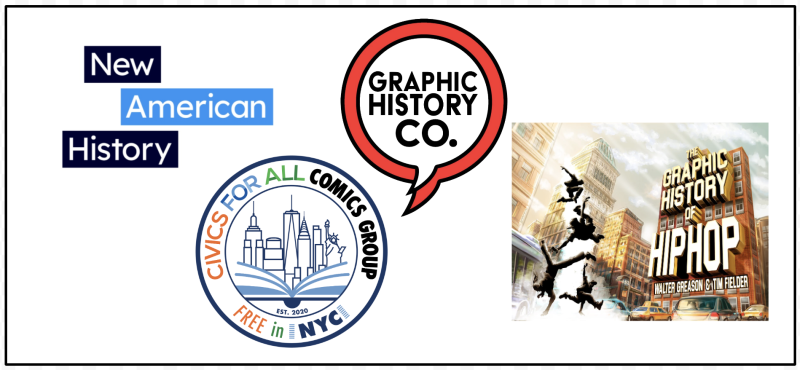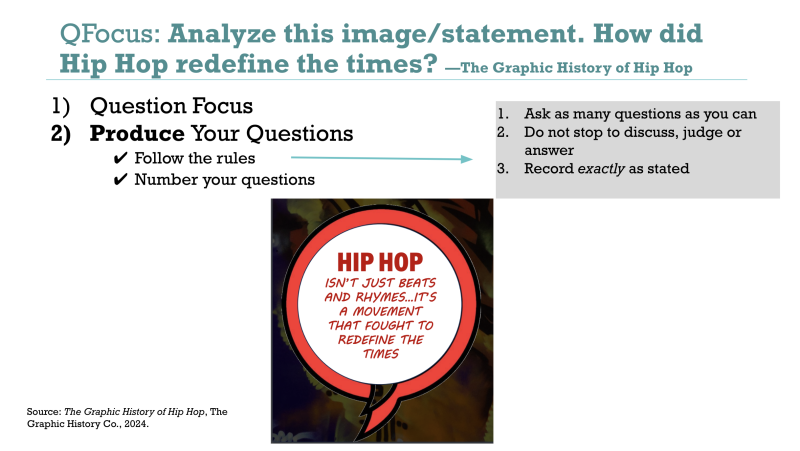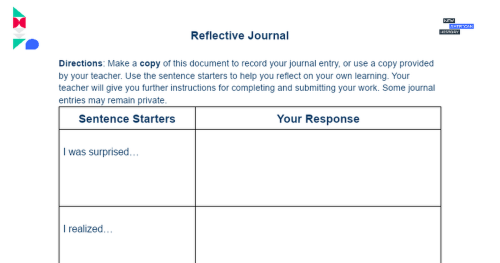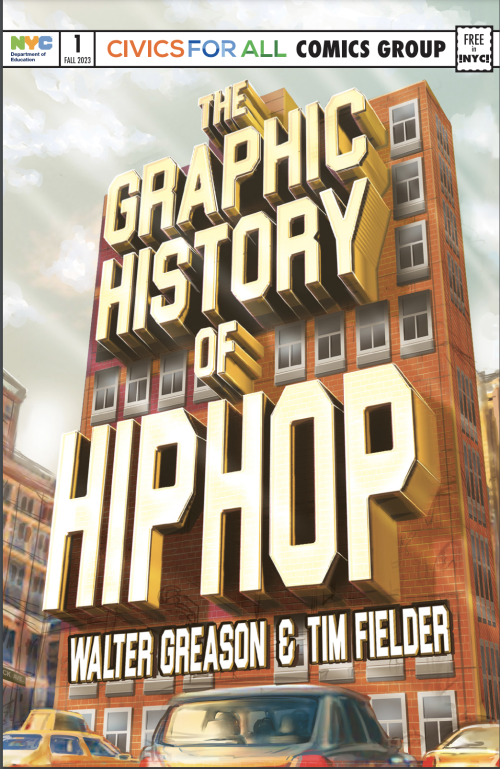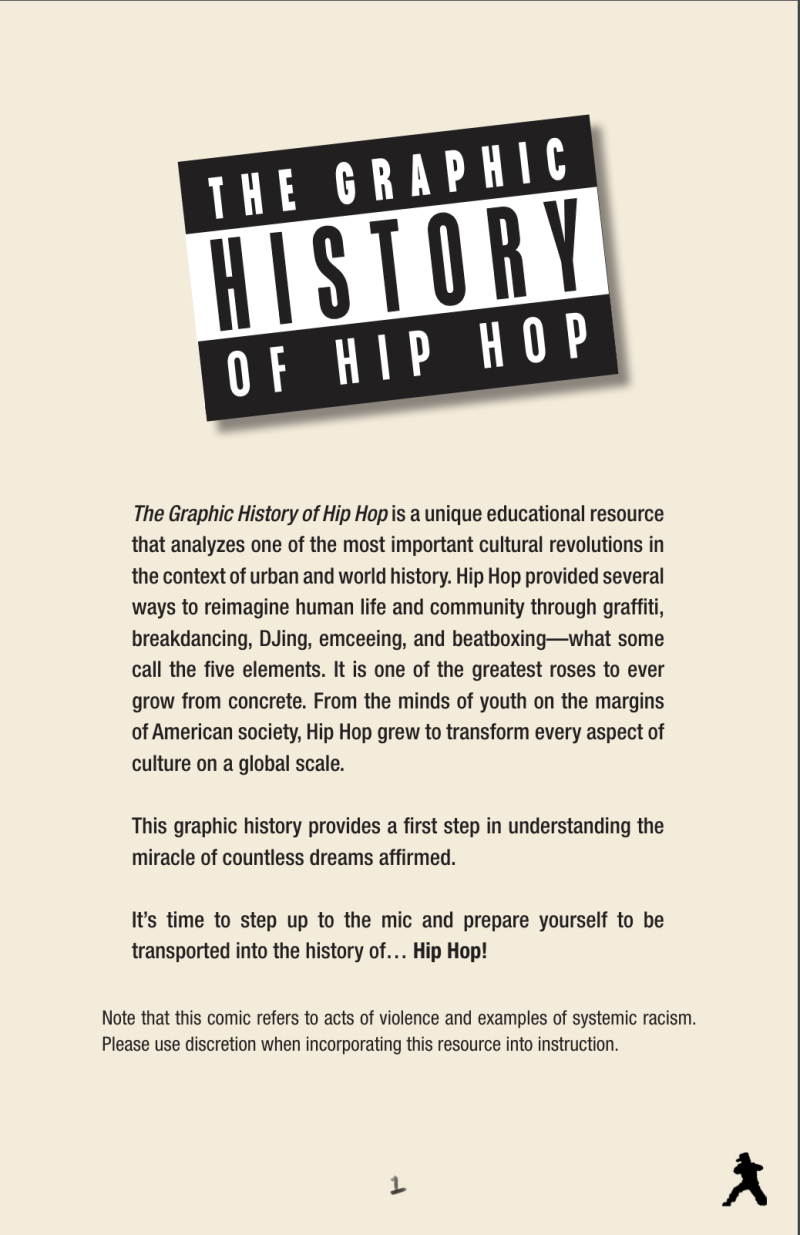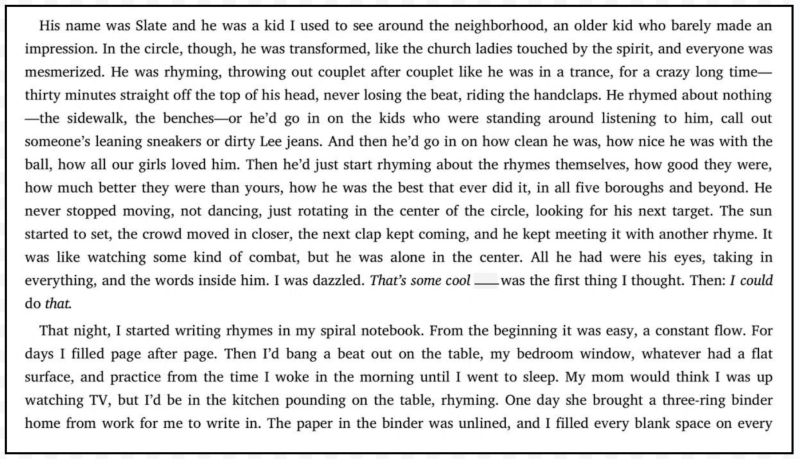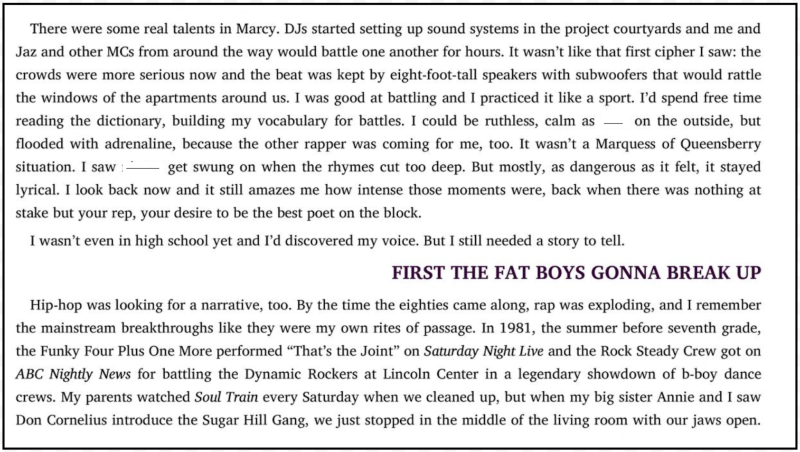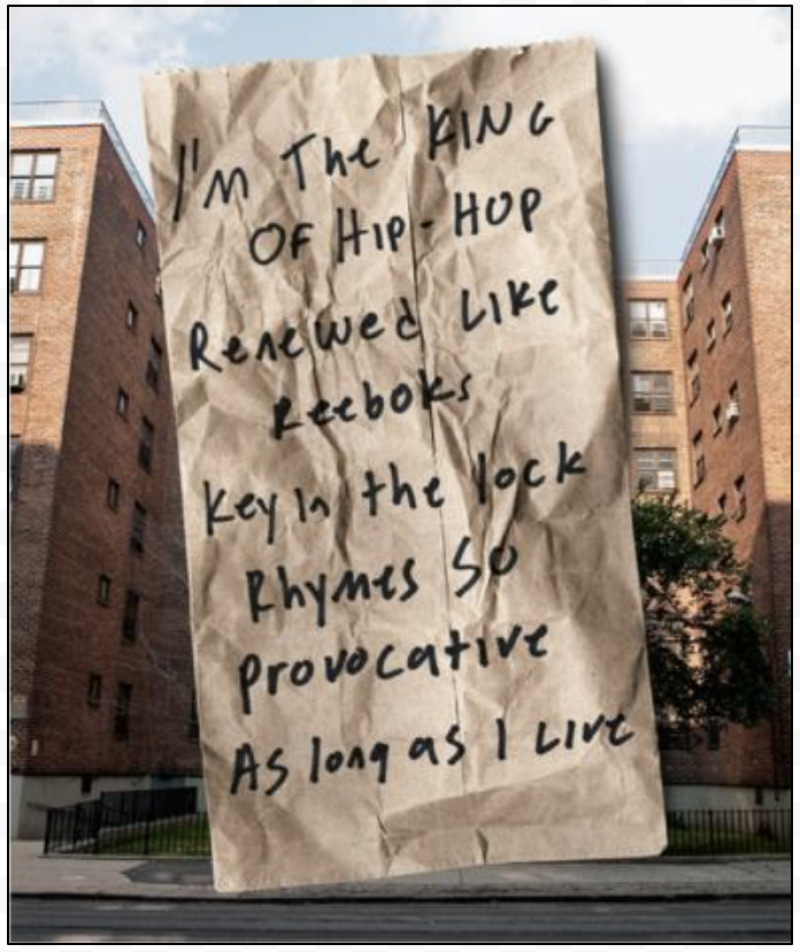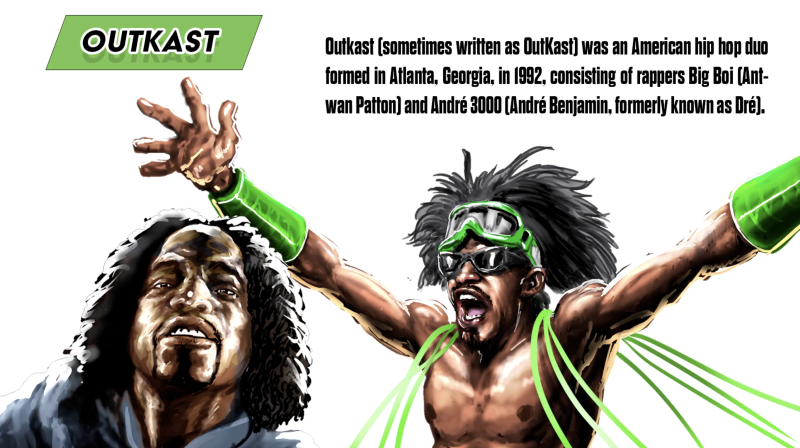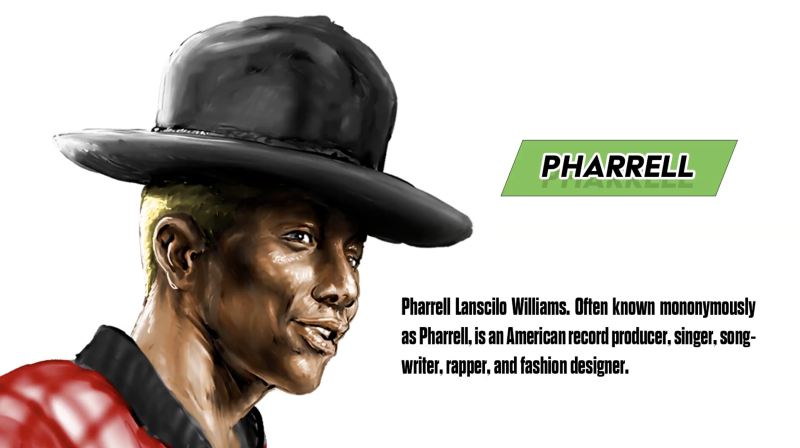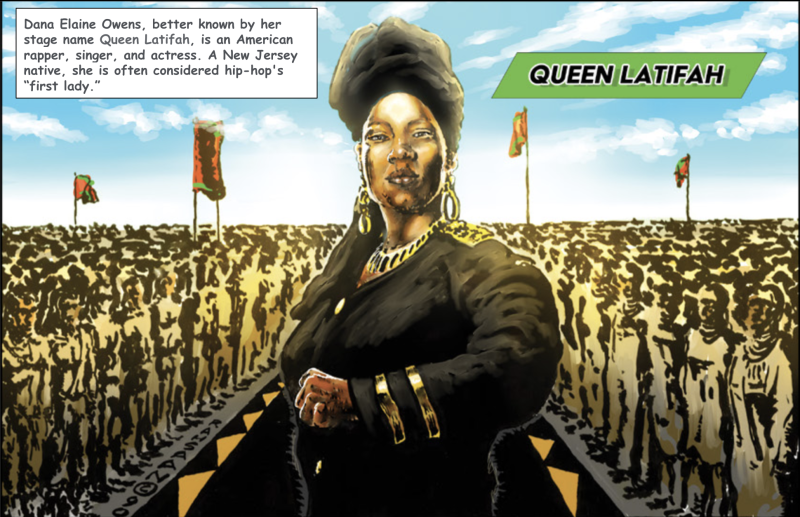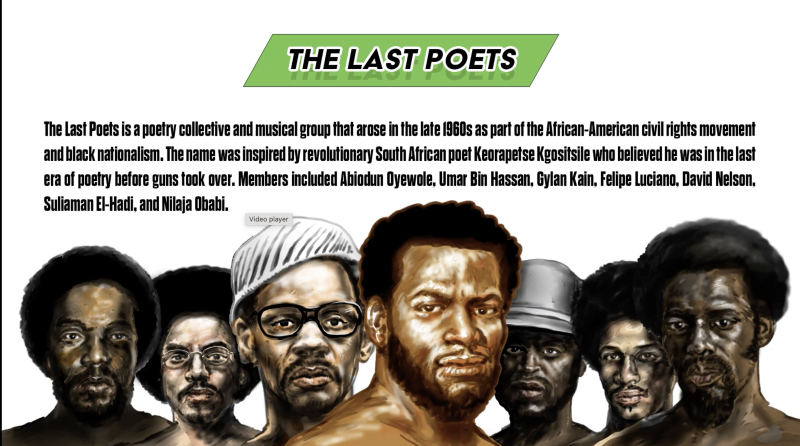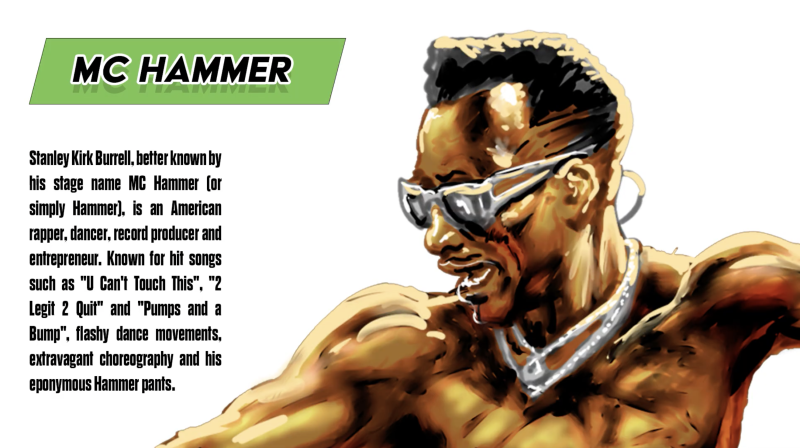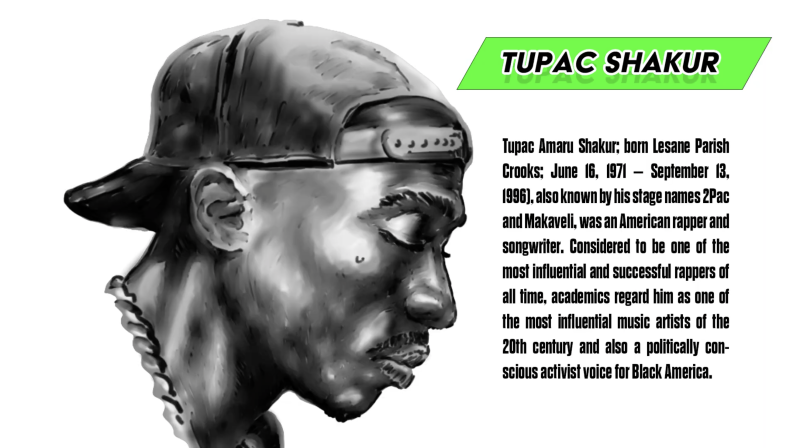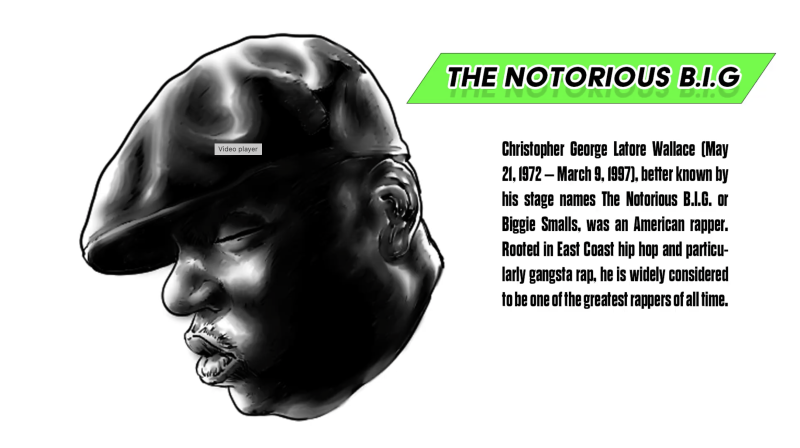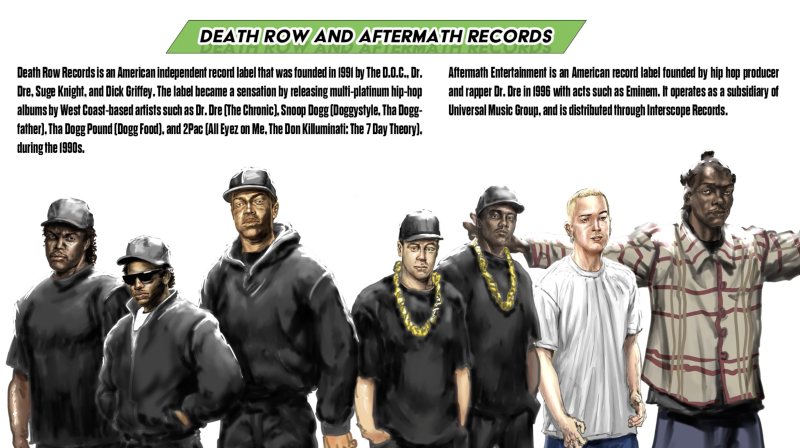This work by New American History is licensed under a Attribution-NonCommercial-ShareAlike 4.0 (CC BY-NC-SA 4.0) International License. Permissions beyond the scope of this license may be available at newamericanhistory.org.
The Graphic History of Hip Hop
View Student Version
Standards
C3 Framework:D2.His.1.6-8 Analyze connections among events and developments in broader historical contexts.D2.His.1.9-12 Evaluate how historical events and developments were shaped by unique circumstances of time and place as well as broader historical contexts.D2.His.2.6-8 Classify series of historical events and developments as examples of change and/or continuity.D2.His.5.6-8 Explain how and why perspectives of people have changed over time. D2.His.5.9-12 Analyze how historical contexts shaped and continue to shape people’s perspectives.D2.Eco.1.6-8 Explain how economic decisions affect the well-being of individuals, businesses, and society. D2.Eco.1.9-12 Analyze how incentives influence choices that may result in policies with a range of costs and benefits for different groups.
National Council for Social Studies:Theme 1: Culture
National Geography StandardsStandard 6. How culture and experience influence people’s perceptions of places and regions.
EAD FrameworkDESIGN CHALLENGESMotivating Agency, Sustaining the RepublicAmerica’s Plural Yet Shared Story
PRIMARY THEMECivic Participation RELATED DRIVING QUESTIONSHDQ1.4A How did past generations of Americans understand and answer calls to civic duty in civil society, religious communities, and politics?
CDQ1.4D What are the opportunities and responsibilities of citizenship and civic agency in the 21st century?
SECONDARY THEMEInstitutional & Social Transformation RELATED DRIVING QUESTIONSHDQ5.4B Are there specific moments of political and social change that constitute refoundings? Why? Or why not?CDQ5.4A What is an informal constitution and how does it change?
Teacher Tip: Think about what students should be able to KNOW, UNDERSTAND, and DO at the conclusion of this learning experience. A brief exit pass or other formative assessment may be used to assess student understandings. Setting specific learning targets for the appropriate grade level and content area will increase student success.
Suggested Grade Levels: 6-8, 9-12
Suggested Timeframe: Two 90-minute block classes
Suggested Materials: Internet access via laptop, tablet, or mobile device. Optional paper copies of graphic organizers (provided) and digital or printed copies of the comic. Optional poster board or butcher paper, glue, and markers for timeline activity. Looseleaf paper or plain paper lunch bags and markers for the rhyme journal activity.
Key Vocabulary
Afrofuturism - the cultural, political, and aesthetic movement that reimagines a future filled with arts, science, and technology seen through a Black lens
Annotate - add notes to (a text or diagram) giving an explanation or comment
Austerity - in economics, a set of political-economic policies that aim to reduce government budget deficits through spending cuts, tax increases, or a combination of both
Bankruptcy - the legal inability to pay debts
Blues - a form of American music that became popular in the mid-1800s, closely related to jazz, often instrumental with sad undertones
Capitalism - an economic system in which land, factories, and other resources are owned by individual investors instead of the government, and are often a for-profit business
Comic - one or more series of cartoons, a form of visual storytelling
Contextualize - to think about or provide information about the situation in which something happens
Consumerism - the idea that the consumption of goods is beneficial to society or its economy
Criminal Justice - a system of organizations that protects citizens and ensures fair treatment and accountability is served when a crime is committed, often led by legal experts including lawyers, judges, and law enforcement officials.
Deregulation - to remove government-enforced restrictions or control over businesses, community systems, or services
Disco - a style of popular dance music from the 1970s with a heavy, steady beat
Economics - the study of how goods and services are produced and distributed
Free Markets - a market in which buying and selling are theoretically conducted without restriction
Funk - music emphasizing elements of Rhythm and Blues music with soul music.
Gangster - a person who belongs to a criminal group
Genocide - the intentional attempt to exterminate all members of a certain race, nationality, or ethnic group
Graffiti - something written, scratched or drawn on subway cars, buses, walls, or other spaces in public places
Graphic Novel - a long-form comic or illustrated tool for visual storytelling
Hip Hop - the culture of rap music and its associated styles of dance, dress, behavior, and speech, which originated among young, inner-city African Americans in the 1970s
Incarceration - to be confined to a prison, restricting basic freedoms as a consequence of committing a crime
Jazz - a form of music with strong, complex rhythms, often improvised, that started with African Americans in the late 1800s
Longform - a piece of writing or entertainment longer in length than usual, with greater details
Metropolitan - having to do with a large city and the communities around it
Memoir - an account of the author's own life; autobiography
Organized Crime - criminal activities that are planned and controlled by powerful groups and carried out on a large scale
Privatization - the conversion of an industry, business, or the like from government ownership or control to ownership or control by private citizens or for-profit organizations
Redacted - removing sensitive information from a document so that it may be distributed to a broader audience.
Signifying - a subtle performance of personal irony that satirizes the conditions of daily life in a society that claims to be free while attempting to dominate a marginalized person’s existence.
Social Safety Net - programs providing critical support to people during times of economic hardship
Soul - a type of music combining elements of Black gospel and rhythm-and-blues
Spoken Word poetry - Characterized by rhyme, repetition, improvisation, and wordplay, spoken word poems frequently refer to issues of social justice, politics, race, and community
Suburbs - an area or community located just outside a city or town
Urban History - a field of history that examines the historical nature of cities and towns
White Citizens Councils - an associated network of white supremacist, segregationist organizations in the United States, concentrated in the South and created as part of a white backlash against the US Supreme Court's landmark Brown v. Board of Education ruling
Read for Understanding
Teacher Tips:
New American History Learning Resources may be adapted to a variety of educational settings, including remote learning environments, face-to-face instruction, and blended learning.
If you are teaching remotely, consider using videoconferencing to provide opportunities for students to work in partners or small groups. Digital tools such as Google Docs or Google Slides may also be used for collaboration. Rewordify helps make a complex text more accessible for those reading at a lower Lexile level while still providing a greater depth of knowledge.
These Learning Resources are a collaboration between New American History, the Graphic History Co., and the NYCDOE Civics for All Comics Group. You and your students will need to access the comic from this link, then select the View button to open a .pdf version. Note that this comic refers to acts of violence and examples of systemic racism. Please use discretion when incorporating this resource into your instruction. A YouTube playlist is included in the Notes. Please use discretion when incorporating these songs and lyrics into your instruction.
NOTE: In the ELABORATE and EXTEND sections of these learning resources, the artist known as Jay-Z is referenced, including a clean version of an excerpt from his memoir, edited for appropriate language. Due to recent allegations (winter 2024-25) against this artist, teachers should use discretion when sharing these resources with students. We will update these learning resources once the legal process surrounding this case has been resolved.
The Right Question Institute’s inquiry strategy, the Question Formulation Technique, is included in this learning resource in the Engage activity. You may choose to have students make a copy of the QFT Google Slides, or project them for a whole class discussion.
The S-I-T strategy is used as students create a visual timeline as a way to annotate the text. This explainer from Facing History may help guide your work using this strategy. These templates may be printed or shared as a Google Doc for students to create their own comics. This S-I-T Google Slides deck may be used to create student timelines.
Panels from the abbreviated, special edition comic .pdf version as distributed within NYC Public Schools via the Department of Education’s WE TEACH NOW Program are included throughout these learning resources with permission from the author/illustrator. You may select the View button and read online or print the full .pdf version as needed for learners who would benefit from a print copy. The full version in graphic novel form is available as a digital download. soft or hardback version and would make a great addition to your school or classroom library. We hope if you decide to purchase it you will support a local bookstore! (Note: when we reference a page in the comic, we use the page numbers as they appear at the bottom of each page, not the .pdf numbers which may differ slightly due to the cover and author pages.)
These Learning Resources follow a variation of the 5Es instructional model, and each section may be taught as a separate learning experience, or as part of a sequence of learning experiences. We provide each of our Learning Resources in multiple formats, including web-based and as an editable Google Doc for educators to teach and adapt selected learning experiences as they best suit the needs of your students and local curriculum. You may also wish to embed or remix them into a playlist for students working remotely or independently.
Read for Understanding (for students)
Comics blend the narrative and insight provided by a writer with the vision and craft of a visual artist. As readers engage with the pictures and words, a rhythm takes root in their minds. The best comics provide a quick laugh and new insights. The Graphic History of Hip Hop challenges readers to experience half a century of social change—and then immerse themselves in the sights, sounds, smells, and emotions of New York City.
Engage:
How did Hip Hop redefine the times?
Use the Question Formulation Technique (QFT) to study this statement/image with your classmates. The teacher will introduce the Question Focus (or QFocus) using the statement and the rules for the exchange as posted below. If you are working remotely you may work independently or, if possible, with a group via video conferencing.
The process may begin for a second round once you (and your classmates) conclude the first discussion with a second QFocus, this time using the second slide which includes the same image with the source of the statement now revealed.
After you finish generating your questions, allow time for a final round of the QFT, adding steps 3-5.
Follow the student-developed action plan to learn more about the Graphic History of Hip Hop. An exit ticket may be used, or a reflective journal for the last step of the QFT process.
Your teacher may ask you to record your answers on an exit ticket.
Explore:
How do comics or graphic novels enhance storytelling in ways a traditional history textbook does not?
Graphic novels, or long-form comics, have become popular to interpret literary classics and contextualize history. You have probably seen a few of these in your school or public library, and perhaps you are already familiar with - or a huge fan of - this genre of storytelling.
The Graphic History of Hip Hop is both a comic, available in this shorter version as a free digital download, and a Graphic Novel, an expanded version available from the Graphic History Co. in print or as a digital download at your local library or bookstore.
Spend a few minutes reading the introduction by the author and illustrator on pages 1-2 of the comic. (To access the free version, select the View button which opens the comic as a .pdf file.)
- How is the comic structured?
- In what ways is the comic a social history?
- Describe how the author explains ways the illustrator blends the history and visuals to tell stories.
Now view the Comic Process notes toward the end of the comic.
Turn and talk to a partner about the process the author and illustrator used to develop the stories in the comic.
- What do you notice?
- How did they collaborate to tell the story through both words and images?
- How is this different from the traditional textbooks you have used in the past?
- Do you prefer reading books with mostly words or books with words and pictures or images?
Select a short paragraph from a textbook or chapter book in the classroom with few or no images. Work with a partner to create a 3-4 part storyboard from the text like the one on p. 33 of the comic. You may use one of these templates to help guide your work.
Your teacher may ask you to record your answers on an exit ticket.
Explain:
Can comics help us create a visual timeline of the past for topics we learn in history?
Spend some time reading The Graphic History of Hip Hop You may read along on the digital copy or use a printed copy if provided by your teacher.
Take notes using the S-I-T strategy of the people, places, and events you are most interested in exploring. Be sure to use the graphic organizer provided to note at least one entry per decade. (Your teacher may provide a paper copy, or you may make a copy of the Google Docs version using he link below to record your responses.)
Use the visuals provided below to create a visual timeline of one or more events per decade you annotated on the graphic organizer. You may choose to print them and create a paper version using poster board or butcher paper as provided by your teacher, or make a copy of and use this Graphic History of Hip Hop Google Slides deck.
Your teacher may ask you to record your answers on an exit ticket.
Elaborate:
How might a comic or graphic novel use the visual medium to express or guide the reader to a deeper understanding in ways plain text cannot?
On page 26, in one of the final panels of the comic, the authors share an illustration of the global impact of Hip Hop music and culture around the world. Look carefully at the image.
- What do you notice?
- What imagery is depicted in the background of the panel? Who might the images represent?
View these videos from illustrator Tim Fielder revealing the images behind the panels in the comic.
Now go back and see if there are other details or features you might have missed in the comic that may provide additional clues about the history of Hip Hop music.
Share what you see with a partner or your class as directed by your teacher.
Your teacher may ask you to record your answers on an exit ticket.
Extend:
Jay-Z, a successful rapper, music producer, author, and entrepreneur reflected on his career and earlier influences in his autobiography, Decoded.
Read this excerpt from pages 10-12, as viewed on the Internet Archive, where Jay-Z describes how he kept a Rhyme Journal in a spiral notebook, recopying rhymes he scribbled on scraps of paper or paper bags during the day, as the ideas came to him. He began writing them in what he described as a form of poetry.
(Note: this text includes some language and themes in the author’s own language which your teacher or school may not find acceptable for classroom use. We have redacted them in the image gallery. Use your best judgment if you choose to explore the text live on the Internet Archive site, and be respectful of your teacher and peers when reading and discussing sensitive language and content.)
Create your own rhyme journal. You may use paper/pencil or create your own digital journal entry using a Google Doc or other online platform of your choice. (Jay-Z often used brown paper bags from the corner store!) You may use one of the images below from the comic or graphic novel versions of the text, or another favorite artist as your inspiration.
We would love to read or hear some of your rhymes! Your teacher or a trusted adult may email them to us at editor@newamericanhistory.com - we promise to share them with the author and illustrator.
For more information about The Graphic History of Hip Hop Vol. I, check out our special edition of New American History Office Hours with Walter and Tim!
Your teacher may ask you to record your answers on an exit ticket.
Citations:
Greason, Walter, and Tim Fielder (Illustrator). “The Graphic History of Hip Hop #1.” WeTeachNYC, April 1, 2024. https://www.weteachnyc.org/resources/resource/the-graphic-history-of-hip-hop-1/.
Jay-Z. “Decoded by Jay-Z : Free Download, Borrow, and Streaming.” Internet Archive, November 16, 2010. https://archive.org/details/DecodedByJayZ.
“S-i-T: Surprising, Interesting, Troubling.” Facing History & Ourselves. Accessed June 17, 2024. https://www.facinghistory.org/resource-library/s-i-t-surprising-interesting-troubling.
“What Is the QFT?” Right Question Institute, May 6, 2022. https://rightquestion.org/what-is-the-qft/.
View this Learning Resource as a Google Doc


